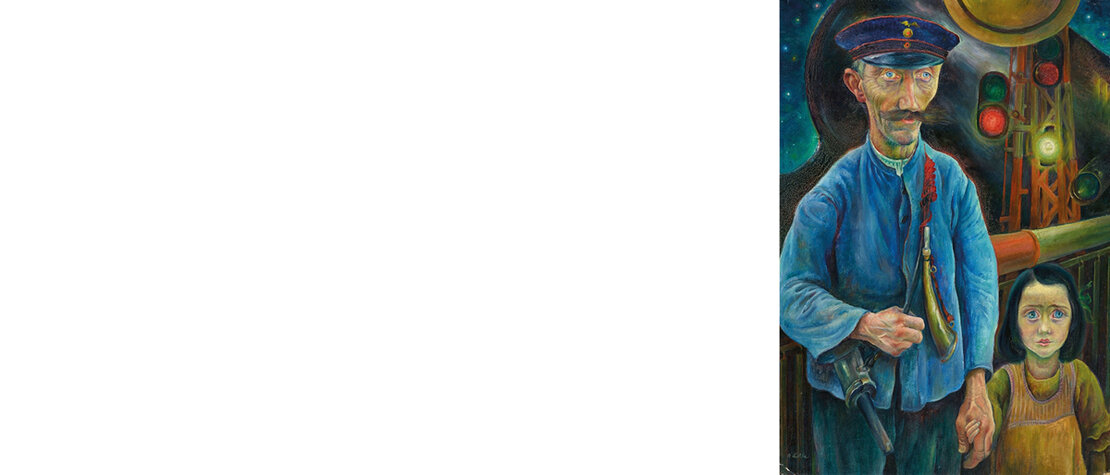A spectacular record for Albert Birkle
The Evening Sale offer of Modern and Contemporary Art was characterised by a wealth of six-figure prices and considerable increases not only for the highlights, giving a very pleasing total result of over 11 million euro. Together with the Contemporary Art, four international records alone were achieved – the extended two-week preview and exhibition at Lempertz in Brussels proved worthwhile. The Picasso drawing was the only exception – but here there is lively interest and it is under intense renegotiation. There were numerous bids from the internet, although telephone bidding still took the lion’s share.

With a result of 824,000 euro following a considerable increase, a canvas by Albert Birkle was the undisputed highlight of the auction, far exceeding the previous record price. Lyonel Feininger’s “Stilleben” from the year 1911 brought € 692,000 and a canvas by Juan Gris went far above its estimate up to € 425,000. A painting and a gouache by August Macke saw results of € 400,00 and € 119,000 respectively whilst an oil painting by Paula Modersohn-Becker rose to € 337,000.
A landscape by Raoul Dufy reached € 125,000, a painting by Alexej von Jawlensky € 112,000, and a painting by Mela Muter € 100,000. Shining out amongst the sculptures was an Ernst Barlach for € 112,000, a work by Ewald Mataré for € 107,000 and by Fritz Klimsch for € 112,000.
A minute-long persistent bidding battle between international parties raised Albert Birkle’s 1927 canvas “Der Bahnwärter” far above all previous international records to reach € 824,000, from an estimate of € 80/100,000 – an impressive painting by one of the New Objectivity painters, full of suggestions and secrets (lot 3).
In private ownership for many years, the painting “Stilleben auf blauem Tisch” is one of Lyonel Feininger’s important early still lifes. Various sojourns in Paris brought the painter closer to the work of the French avant-garde, and in 1911, the year our painting was created, Feininger exhibited many works in Paris’ great “Société des Indépendants” event. His encounter with Cubism changed Feininger’s conception of nature, and cubistic and prismatic structures found their way into his painting. The remarkable painting was eventually acquired for €692,000 (lot 11, €400/600,000).
In the short intense creative period granted to him, Juan Gris’ motifs concentrated primarily on still life. Cubism was the only way for him and his companions to depict the visual essence of the representational world. The still life “Raisins, carafe et livre” from 1922 formulates one of his very characteristic visualisations of this idea. A Swiss collector prevailed against the competition with € 425,000 (lot 61, € 300/350,000).
August Macke was present with a canvas and two works on paper. The year 1912, when the present painting “Blumenkasten mit Kaktus” was created, was of definitive importance for Macke – his friendship with artists of the Blaue Reiter giving him impulses for his own work. A German collector had to invest € 400,000 to win (lot 46, € 220/250,000). Macke’s gouache “Orientalisches Liebespaar” from the same year sold to a German museum for € 119,000 (lot 48, € 80/100,000).
Paula Modersohn-Becker’s picture “Kinder zwischen Birkenstämmen” from the year 1904 was pushed up to € 337,000 by a German collector. Once owned by the artist’s mother, the painting’s composition, choice of colours and the simplifications of its visual indications provide an exemplary summation of the elements of her developing personal style (lot 22, € 180/220,000).
Under the influence of the works of Cézanne and through collaboration with Georges Braque, Raoul Dufy turned to Cubism in around 1908. The luminous tonality of his previous fauvist works was replaced by a more reserved colour scheme. Formal and constructive questions entered into the foreground. “Le Jardin à Munich” from 1909/1910 offered here changed hands for € 125,000 (lot 63, € 100/130,000). “Variation 1916 N. 4” by Alexej von Jawlensky from the year 1916 sold to a German collector for € 112,000 (lot 53, € 90/120,000), whilst a further German buyer acquired “Großes Stilleben: Blumen in bauchiger Vase” from 1936 for € 75,000 (lot 55, € 40/50,000), and Mela Muter’s large-format canvas “Kellerkinder” from 1916 went to a Polish collection for € 100,000 (lot 92, € 80/100,000).
A special work by Piet Mondrian was also offered for sale. His canvas “Farm building near irrigation ditch with farmer at work and woman doing the laundry” had only been recently discovered and listed under number A43a in the catalogue raisonné of Piet Mondrian by the RKD – Netherlands Institute for Art History. A New York collector invested € 72,000 for the naturalistic-impressionist early work from 1898-1902 – an era in which Mondrian’s work was characterised by the intense study of the Dutch landscape (lot 18, € 60/80,000). A work on paper by Paul Klee from 1918 was sold for € 82,000 (lot 81, € 40/45,000) whist the 1923 painting “Zirkusreiterin” by Gert Heinrich Wollheim saw an even greater rise up to an international record price of € 85,000 (lot 17, € 25,/30,000).
The sculptures shone with €112,000 for Ernst Barlach’s 49.5 cm bronze “Der singende Mann” from 1928 (lot 93, € 80/100,000), as did the slightly smaller sculpture “Der Asket (Der Beter)” from 1925 (lot 91, € 35/40,000). There was great interest for Ewald Mataré’s “Tänzelndes Pferd (Chinesisches Pferd)” which was acquired eventually by a German collector for € 107,000 (lot 24, € 35/45,000), whilst a further German buyer could only add Fritz Klimsch’s 1941/42 bronze “Jugend” to his collection for € 112,000 (lot 96, € 60/80,000).
